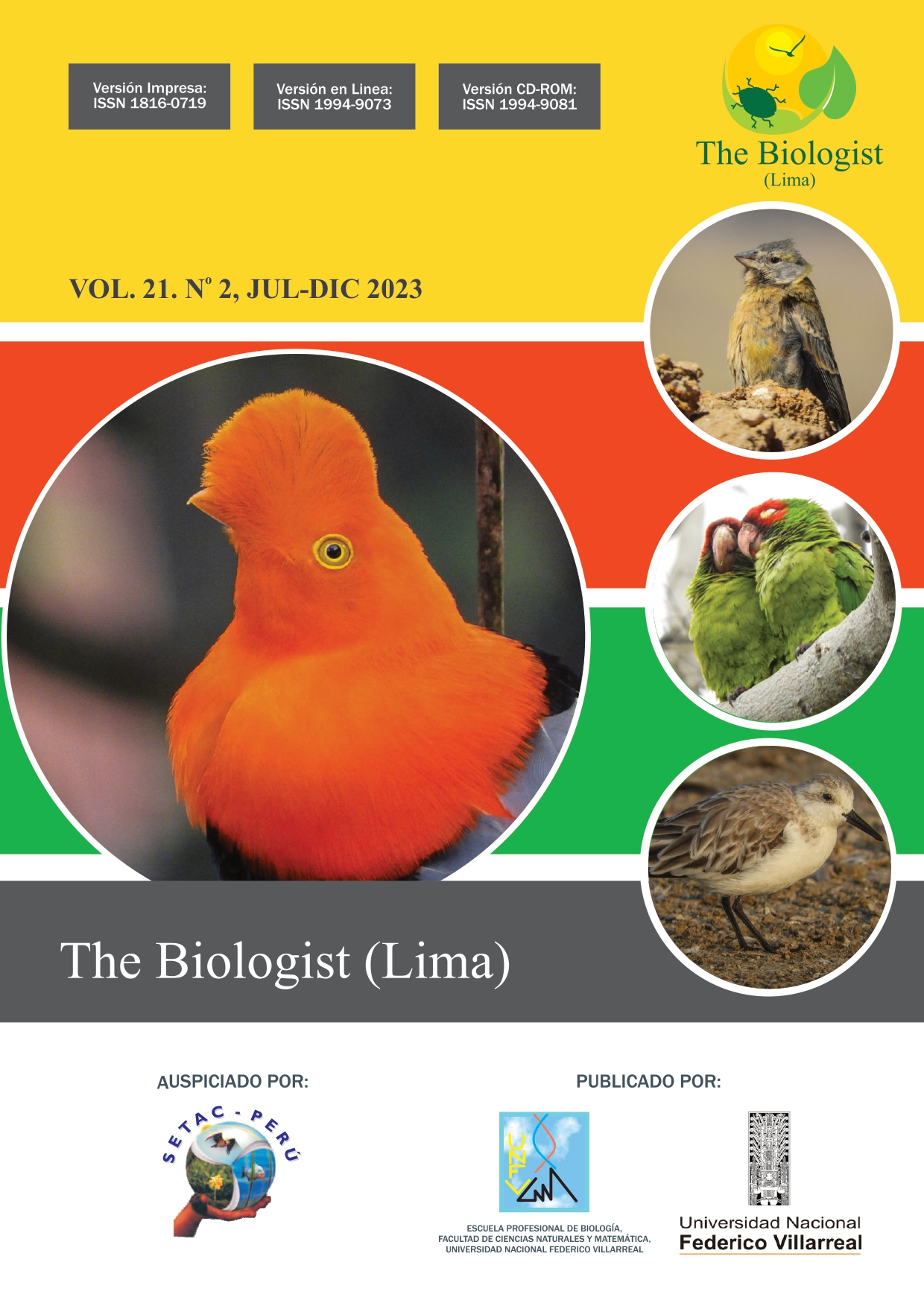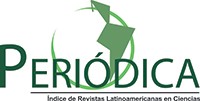Paradigm transformation from biomonitors to bioecotoximonitors in aquatic ecotoxicology
DOI:
https://doi.org/10.24039/rtb20232121626Keywords:
bioindicator, biomonitor, ecosystem, ecotoxicological prediction, water qualityAbstract
The objective was to describe a paradigm of transformation of biomonitors to the quality of bioecotoximonitors in aquatic ecotoxicology. The limitations of physico-chemical and microbiological parameters in environmental decision making to recognize the quality of aquatic ecosystems are discussed. The restriction of physical-chemical and microbiological parameters allowed the use of biological indicators to be considered as a bioassessment method. However, their presence or absence also means a disadvantage in the correlation with undesired exposures or intra-seasonal comparison. Therefore, biomonitors emerge that offer various interpretative possibilities. However, implicit in the concept of biomonitors is the assessment of quality at any time and period. A consequence of poor water quality is the presence of certain parasites as indicator organisms that can infect the biomonitors themselves, which would represent a higher analytical probability. This possibility indicates a new perspective in the selection of an organism as an evaluator and is called: bioecotoximonitor. It is concluded, if a biomonitor has any associated species in its organism as a result of its status as an indicator of water quality, then it is a bioecotoximonitor. There are no precedents in this terminology, which would be a new paradigm in the monitoring, analysis, evaluation and recognition of water quality.
Downloads
References
Aguirre, P.J., Rodríguez, B.J., & Ospina, T.R. (2012). Deriva de macroinvertebrados acuáticos en dos sitios con diferente grado de perturbación, Río Gaira, Santa Marta-Colombia. Intropica, 7, 9–19.
Amaral, A.F.E., Herrero, L.C., Miranda, M., Alves, B.R.Jr., Costa, O.F.L., Araripe, S.M.C., Lippi, O.E., Hamad, M.A.H., & López, A.M. (2021). Fish tissues for biomonitoring toxic and essential trace elements in the Lower Amazon. Environmental Pollution, 283, 1–14.
Argota, P.G. (2023). Necesidad social de protocolos ambientales con peces como biomonitores de metales pesados en ecotoxicología acuática. Neotropical Helminthology, 17, 85–89.
Argota, P.G., & Iannacone, O.J. (2017). Predicción cuantitativa mediante biomarcadores de uso permanente como nuevo criterio para biomonitores en ecotoxicología acuática. The Biologist (Lima), 17, 141–153.
Argota, P.G., Argota, C.H., & Iannacone, J. (2015). Costo ambiental sostenible relativo a la variabilidad físico-química de las aguas sobre la disponibilidad de metales en el ecosistema San Juan, Santiago de Cuba, Cuba. The Biologist (Lima), 14, 219–232.
Bebianno, M.J., Pereira, C.G., Rey, F., Cravo, A., Duarte, D., D’Errico, G., & Regoli, F. (2015). Integrated approach to assess ecosystem health in harbor areas. Science of the Total Environment, 514, 92–107.
Bellino, A., Alfani, A., De Riso, L., Gregorio, R., Pellegrino, T., & Baldantoni, D. (2020). A promising cosmopolitan biomonitor of potentially toxic elements in freshwater ecosystems: concentration gradients in sensitive areas. Ecological Indicator, 109, 1–9.
Brown, R.M., McClelland, N.I, Deininger, R.A., Tozer, R.G. (1970). A water quality index–do we dare? Water and Sewage Works, 117, 339–343.
Carignan, V., & Villard, M.A. (2002). Selecting indicator species to monitor ecological in¬tegrity: a review. Environmental monitoring and assessment, 78, 45–61.
Dalzochio, T., Simões, R., Airton, L., Santos de Souza, M., Prado, R.G.Z., Petry, I.E., Andriguetti, N.B., Silva, H., Gláucia, J., Günther, G., & Basso da Silva, L. (2017). Water quality parameters, biomarkers and metal bioaccumulation in native fish captured in the ilha river, southern brazil. Chemosphere, 189, 609–618.
de la Lanza-Espino, G. (2000). Criterios gene¬rales para la elección de bioindicadores, pp. 17-41. In: de la Lanza Espino, G., Hernández, P.S., & Carvajal, P. J.L. (com¬piladores) Organismos indicadores de la calidad del agua y de la contaminación (bioindicadores). SEMARNAP, CONA¬GUA. Instituto de Biología. Universidad Autónoma de México, Plaza y Valdés editores.
Debén, S., Aboal, J.R., Giráldez, P., Varela, Z., & Fernández, J.A. (2019). Developing a biotechnological tool for monitoring water quality: in vitro clone culture of the aquatic moss Fontinalis antipyretica. Water, 11, 1–10.
Depledge, M.H. (1984). Disruption of circulatory and respiratory activity in shore crabs (Carcinus maenas L.) exposed to heavy metal pollution. Comparative Biochemistry and Physiology Part C: Comparative Pharmacology, 78, 445–459.
Díaz, S., Pascual, U., Stenseke, M., Martín, L.B., Watson, R.T., Molnár, Z., Hill, R., Chan, K.M.A., Baste, I.A., Brauman, K.A., Polasky, S., Church, A., Lonsdale, M., Larigauderie, A., Leadley, P.W., van Oudenhoven, A.P.E., van der Plaat, F., Schrӧter, M., Lavorel, S., Aumeeruddy, T.Y., Bukvareva, E., Davies, K., Demissew, S., Erpul, G.,
Failler, P., Guerra, C.A., Hewitt, C.L., Keune, H., Lindley, S., &. Shirayama, Y. (2018). Assessing nature’s contributions to people. Science, 359, 270–272.
Evers, C.R., Wardropper, C.B., Branoff, B., Granek, E.F., Hirsch, S.L., Link, T.E., Olivero, L.S., & Wilson, C. (2018). The ecosystem services and biodiversity of novel ecosystems: A literature review. Global Ecology and Conservation, 13, 1–11.
Gruber, K. (2018). Cleaning up pollutants to protect future health. Nature, 555, 20–22.
Hu, L., Luo, D., Wang, L., Yu, M., Zhao, S., Wang, Y., Mei, S., & Zhang, G. (2021). Levels and profiles of persistent organic pollutants in breast milk in China and their potential health risks to breastfed infants: a review. Science of the Total Environment, 753, 1–15.
Juma, R.R., Salum, N.S., Tairova, Z., Strand, J., Bakari, S.S., & Sheikh, M.A. (2018). Potential of Periophthalmus sobrinus and Siganus sutor as bioindicator fish species for PAH pollution in tropical waters. Regional Studies in Marine Science, 18, 170–176.
Kannel, P.R., Lee, S., Kanel, S.R., & Khan, S.P. (2007). Chemometric application in classification and assessment of monitoring locations of an urban river system. Analytica Chimica Acta, 582, 390–399.
Keyes, A.A., McLaughlin, J.P., Barner, A.K., & Dee, L.E. (2021). An ecological network approach to predict ecosystem service vulnerability to species losses. Nature Communications, 12, 1–11.
Kumari, P., & Maiti, S.K. (2019). Health risk assessment of lead, mercury, and other metal (loid)s: A potential threat to the population consuming fish inhabiting, a lentic ecosystem in Steel City (Jamshedpur), India. Human and Ecological Risk Assessment, 25, 2174–2192.
Laffoley, D. & Baxter, J.M., eds. (2019). Ocean deoxygenation: Everyone’s problem: Causes, impacts, consequences and solutions: Summary for Policy Makers. International Union for Conservation of Nature (IUCN), Gland, 28 p.
Lakshmanan, R., Kesavan, K., Vijayanand, P., Rajaram, V., & Rajagopal, S. (2009). Heavy metals accumulation in five commercially important fishes of Parangipettai, Southeast coast of India. Advance Journal of Food Science and Technology, 1, 63–65.
Marin, V., Arranz, I., Grenouillet, G., & Chucherousset, J. (2023). Fish size spectrum as a complementary biomonitoring approach of freshwater ecosystems. Ecological Indicator, 146, 1–8.
Markert, B. (1994). Biomonitoring-Quo vadis. UWSF-Z Umweltchem Okotox, 6, 145–149.
Mathiesen, L., Buerki, T.T., Pastuschek, J., Aengenheister, L., & Knudsen, L.E. (2021). Fetal exposure to environmental chemicals; insights from placental perfusion studies. Placenta, 106, 58–66.
Morales, F.N., Rodríguez, M.A., Gelabert, R., & Flores, L.M. (2019). Parasites of fish Poecilia velifera and their potential as bioindicators of wetland restoration progress. Helgoland Marine Research, 73, 1–8.
Nunes, L.S., Lund, A.L., & Guiarrizzo, T. (2023). A multi-tissues comparison of biomarkers in Serrasalmus rhombeus (Teleostei: Serrasalmidae) and Prochilodus nigricans (Teleostei: Prochilodontidae) from two Amazonian rivers with distinct levels of pollution. Ecological Indicator, 147, 1–11.
Odum, E.P. (1972). Ecología. Interamericana. Interamericana. 639 p.
Rainbow, P.S. (1995). Biomonitoring of heavy metal availability in the marine environment. Marine Pollution Bulletin, 31, 183–192.
Serra, S.R.Q., Calapez, A.R., Simões, N.E., Marques, J.A.A.S., Laranjo, M., & Feio, M.J. (2019). Effects of variations in water quantity and quality in structure and functions of invertebrates’ community of a Mediterranean urban stream. Urban Ecosystems, 22, 1173–1186.
Soleman, S.R., Fujitani, T., Fujii, Y., & Harada, K.H. (2020). Levels of octachlorostyrene in mothers’ milk and potential exposure among infants in Sendai City, Japan 2012. International Journal Environmental Research and Public Health, 17, 1–10.
Truchet, D.M., Buzzi, N.S., Negrin, V.L., Botté, S.E., & Marcovecchio, J.E. (2022). First long-term assessment of metals and associated ecological risk in subtidal sediments of a human-impacted SW Atlantic estuary. Marine Pollution Bulletin, 174, 113235.
van den Berg, M., Kypke, K., Kotz, A., Tritscher, A., Lee, S.Y., Magulova, K., Fiedler, H., & Malisch, R. (2017). WHO/UNEP global surveys of PCDDs, PCDFs, PCBs and DDTs in human milk and benefit-risk evaluation of breastfeeding. Archives of Toxicology, 91, 83–96.
Van der Oost, R., Opperhuizen, A., Satumalay, K., Heida, H., & Vermeulen, N.P.E. (1996). Biomonitoring aquatic pollution with feral eel (Anguilla anguilla) I. bioaccumulation: biota-sediment ratios of PCBs, OCPs, PCDDs and PCDFs. Aquatic Toxicology, 35, 21–46.
Washington, H.G. (1984). Diversity, bioticand similarity indices. A review with special relevance to aquatic ecosystems. Water Research, 18, 653–694.
Zari, M.P. (2018). The importance of urban biodiversity – an ecosystem services approach. Biodiversity International Journal, 2, 357–360.
Downloads
Published
How to Cite
Issue
Section
License

This work is licensed under a Creative Commons Attribution-NonCommercial-NoDerivatives 4.0 International License.
Objeto: El AUTOR-CEDENTE transfiere de manera TOTAL Y SIN LIMITACIÓN alguna al CESIONARIO (Revista The Biologist (Lima)) los derechos patrimoniales que le corresponden sobre sus obras por el tiempo que establezca la ley internacional. En virtud de lo anterior, se entiende que el CESIONARIO adquiere el derecho de reproducción en todas sus modalidades, incluso para inclusión audiovisual; el derecho de transformación o adaptación, comunicación pública, traducción, distribución y, en general, cualquier tipo de explotación que de las obras se pueda realizar por cualquier medio conocido o por conocer en el territorio nacional o internacional.
Remuneración: La cesión de los derechos patrimoniales de autor que mediante este contrato se hace será a título gratuito.
Condiciones y legitimidad de los derechos: El AUTOR-CEDENTE garantiza que es propietario integral de los derechos de explotación de la(s) obra(s) y en consecuencia garantiza que puede contratar y transferir los derechos aquí cedidos sin ningún tipo de limitación por no tener ningún tipo de gravamen, limitación o disposición. En todo caso, responderá por cualquier reclamo que en materia de derecho de autor se pueda presentar, exonerando de cualquier responsabilidad al CESIONARIO.
Licencia de acceso abierto: El AUTOR-CEDENTE autoriza que manuscrito publicado en la Revista Científica The Biologist (Lima) (versión Impresa ISSN 1816-0719, versión en línea ISSN 1994-9073) permanece disponible para su consulta pública en el sitio web http://revistas.unfv.edu.pe/index.php/rtb/index y en los diferentes sistemas de indexación y bases de datos en las que la revista tiene visibilidad, bajo la licencia Creative Commons, en la modalidad Reconocimiento-No comercial- Sin Trabajos derivados –aprobada en Perú, y por lo tanto son de acceso abierto. De ahí que los autores dan, sin derecho a retribución económica, a la Escuela Profesional de Biología, Facultad de Ciencias Naturales y Matemática de la Universidad Nacional Federico Villarreal (EPB - FCCNM - UNFV), los derechos de autor para la edición y reproducción a través de diferentes medios de difusión.









































